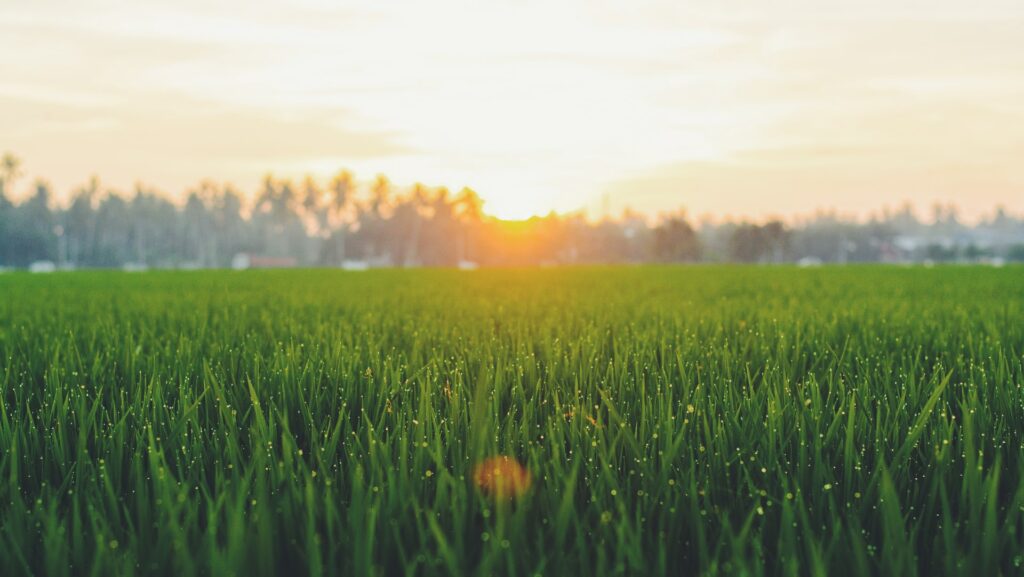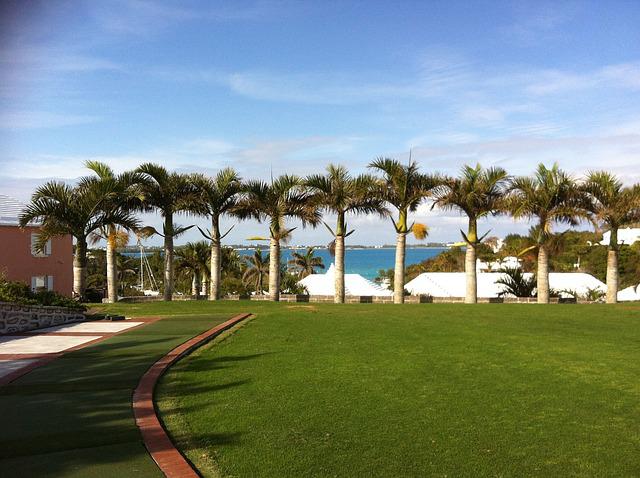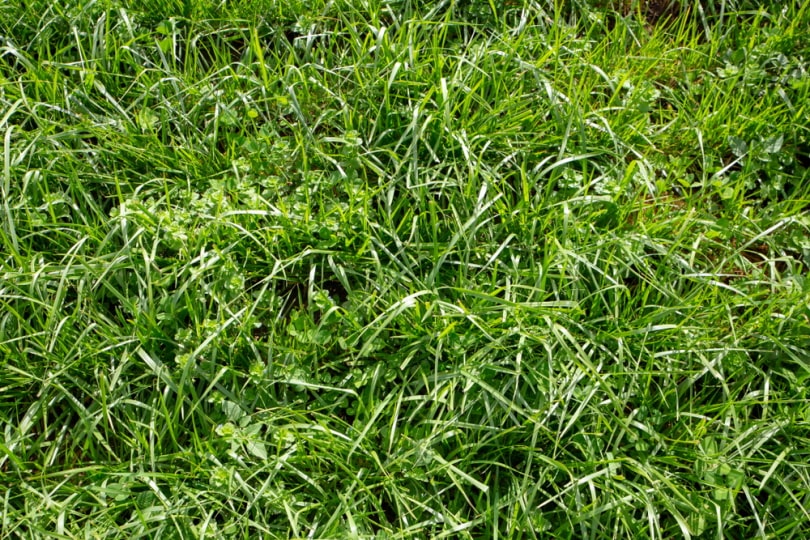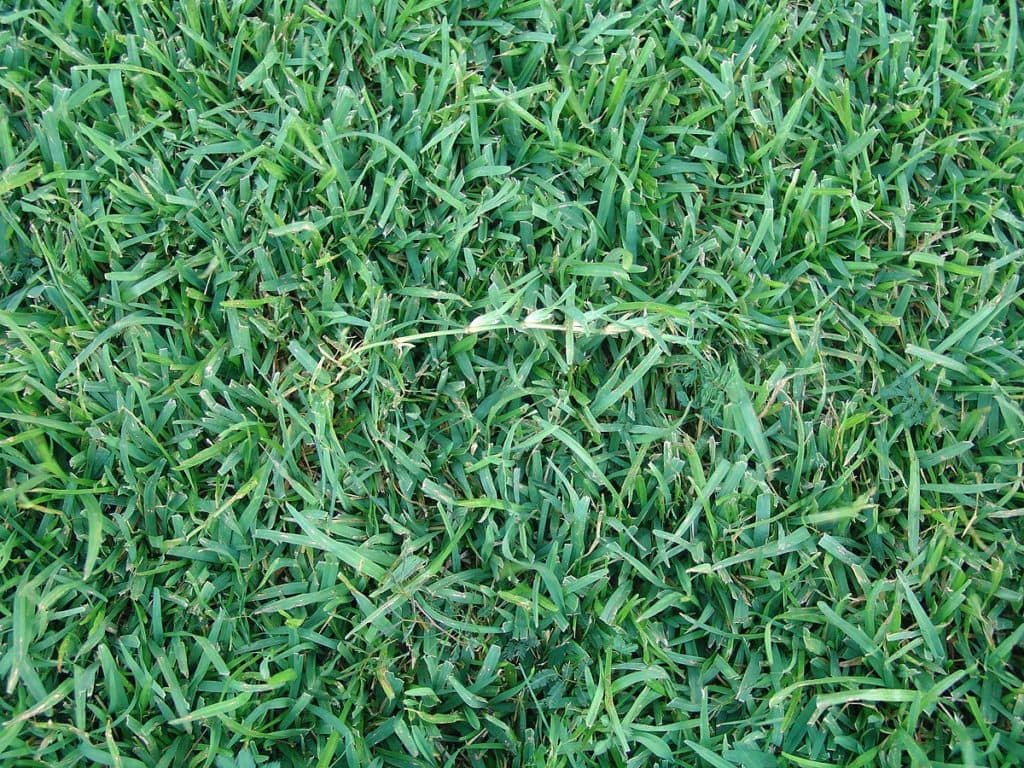5 Types of Grass in Alabama (with Pictures)
-
Codee Chessher
- Last updated:

Alabama is a unique state that straddles the Southern United States while suffering its fair share of chilly winters. Needless to say, finding grass that can tolerate both heat and cold is a challenge. Let’s take a look at a few of the best types of grass for the Yellowhammer State.
What Types of Grass Thrive in Alabama?
Alabama is a state with various climates. In the north, you have surprisingly cool winters, while the entire state gets swelteringly hot during the summer. With this range of temperatures, what’s a homeowner to do about their lawn?
Ideally, you want grass that can handle a little cool but still prefers the heat. Warm season grasses do very well in Central Alabama, while the north part of the state calls for cool season grasses, like tall fescue. Here are some potential options for your lawn:
The 5 Top Grass Choices for Your Lawn in Alabama
1. Bermuda Grass

| Soil type: | Slightly acidic |
| Drought resistance: | Moderate |
| Shade tolerance: | Very low |
Bermuda Grass is one of the staple grasses of the Southern US. It’s moderately drought and heat-resistant and loves sunlight. It even does well in salty soil, although you need to avoid putting it in the shade. Bermuda Grass is not shade tolerant at all and needs all the UV rays it can get.
Bermuda grass will do well all over Alabama, but it might die back to the ground in the winter. To help combat this, mix Bermuda Grass with Tall Fescue or Kentucky Bluegrass for some cold tolerance.
2. Tall Fescue

| Soil type: | Fertile |
| Drought resistance: | High |
| Shade tolerance: | High |
Tall Fescue is the grass of choice in Birmingham and other northern parts of Alabama because it can tolerate both heat and cold with equal success. What’s even better is that Tall Fescue does great in both the shade and periods of drought. You’ll commonly see this grass mixed with other, less cold-tolerant grasses.
Tall Fescue is an ideal choice for residential lawns and other areas that get a lot of foot traffic, bouncing back from even heavy footfalls. The only caveat with this grass is that it’s hard to grow from seed, but you can help combat that issue by overseeding.
3. Zoysia Grass

| Soil type: | Clay |
| Drought resistance: | High |
| Shade tolerance: | High |
Zoysia is one of the best sod choices for Alabama because it can tolerate both heat and cold well, but it’s nearly impossible to grow from seed because it grows so slowly. Zoysia isn’t as durable for areas with high foot traffic, but it thrives in shade gardens. Fortunately, you don’t have to mow it as often as other grasses because of its slow growth.
Either type of Zoysia Grass would be suitable for Alabama’s climate. Zoysia japonica looks the most like common grasses but with moderate water requirements. The other type, Zoysia matrella, needs more water but grows into a denser carpet-style grass.
4. Bahia Grass

| Soil type: | Acidic and sandy |
| Drought resistance: | High |
| Shade tolerance: | Moderate |
Bahia Grass is almost perfect for Alabama’s climate because of the deep roots that make it highly drought tolerant and ideal for areas that suffer from soil erosion. It can be used as the only grass for a lawn, but we’d suggest adding some Ryegrass or Tall Fescue in the mix for cold resistance. Once grown, Bahia Grass has a durability that makes it the ultimate turfgrass for heavy traffic areas.
The downside of this grass is that it can produce very tall and unevenly grown seedheads if not regularly mowed. If lawn uniformity is important to you, this may not be the grass for you.
5. Centipede Grass

| Soil type: | Sandy |
| Drought resistance: | n/a |
| Shade tolerance: | Partial |
Centipede Grass does best in Central or Southern Alabama where it doesn’t get very cold. It is, however, perfect for the heat. It grows pretty slowly, so we’d suggest using sod to transplant it to your yard. To combat its distaste for the cold, use high-quality fertilizer to give it a better chance of surviving winter without damage.
Once established, this is one of the lowest maintenance grasses you can buy. It can tolerate more shade than, say, Bermuda Grass, but does best with at least 6 hours of sunlight per day. To keep it from developing thatch, lower your mower’s blades and cut it short.
Conclusion
Finding the perfect grass for any lawn can be difficult, especially with Alabama’s special climate. Thankfully, there are more than a few perfect choices that can make the job an easy one. Soon, your yard will be green and lush all thanks to the research you did before planting any grass seed.
Featured Image Credit: fauzan saari, Unsplash
Contents
